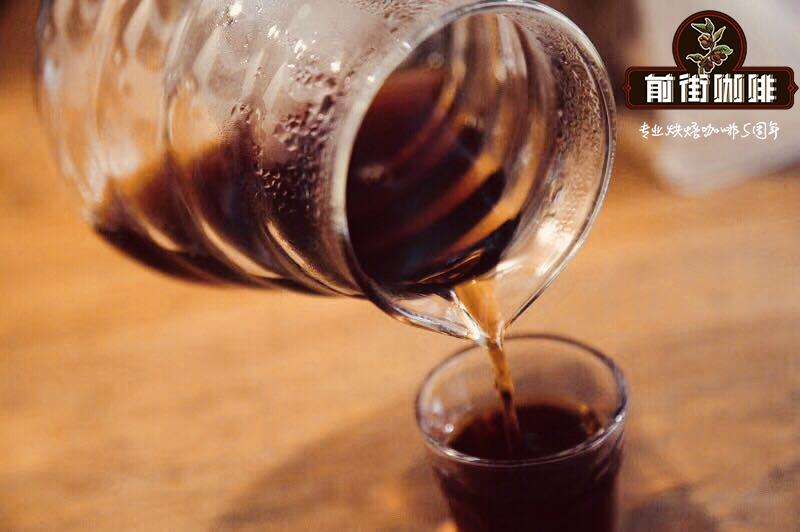Cuban Coffee Brand-Cuban Crystal Mountain Coffee "elegant Princess" in the World's Top Coffee

Professional coffee knowledge exchange more coffee bean information please follow the coffee workshop (Wechat official account cafe_style)
Qianjie-introduction to Cuban Crystal Mountain Coffee
Qianjie-introduction to Cuban Crystal Mountain Coffee
Located in the West Indies, the Republic of Cuba has a detached and pristine natural environment, the beautiful Caribbean Sea and the world-famous Crystal Mountain Coffee. In 1748, coffee was introduced into Cuba from Domiga, and Cuba began to grow coffee ever since. With fertile land, humid climate and abundant Rain Water, Cuba can be called a natural treasure land for coffee cultivation.
The suitable natural conditions provide a favorable natural environment for the growth of coffee trees, and coffee is well planted and developed here. In Cuba, the cultivation of coffee is regulated by the state. The best coffee growing area in Cuba is located in the Central Mountains. Because this area not only grows coffee, but also produces quartz, crystal and other precious minerals, it is also known as Crystal Mountain. At present, Crystal Mountain Coffee is synonymous with top Cuban coffee. One of the remarkable features of Crystal Mountain Coffee is the size of the particles and the bright green color of the beans.
With fertile land, humid climate and abundant Rain Water, Cuba can be called a natural treasure land for coffee cultivation. The suitable natural conditions provide a favorable natural environment for the growth of coffee trees. Coffee is well cultivated and developed here, and the best coffee growing area in Cuba is located in the Central Mountains. Because this area not only grows coffee, but also produces quartz, crystal and other precious minerals, it is also known as Crystal Mountain.
Crystal Mountain is geographically adjacent to the Blue Mountains of Jamaica, with similar climatic conditions and flavor similar to Blue Mountain Coffee, comparable to the Blue Mountains of Jamaica. Also known by the outside world as "the Blue Mountains of Cuba".
Crystal Mountain Coffee is synonymous with top Cuban coffee. Crystal Mountain Coffee is characterized by its large granules and bright green beans. Its flavor and taste features: full particles, uniform taste, with tobacco flavor. Crystal Mountain Coffee beans are typical island beans with a clean and delicate taste, slightly sour taste, not strong but long-lasting, with sweet fruit aromas.
And the most authentic Crystal Mountain Coffee is Cuba's famous Cubita. It slightly contains wine-like bitterness and a touch of sweetness, and even a hint of tobacco, meticulous and smooth, fresh and elegant, almost perfect. It is known as the "noble and elegant princess" in coffee. The general taste of coffee is as strong as heavy metal music, while the taste of Cubita is as delicate and balanced as the softness of country minor. It will take you out of the restless urban hustle and bustle and come back to the quiet countryside to reflect the casual and comfortable side of life.
Crystal Mountain Coffee is the top representative of Cuban coffee, while Cubita is the top representative of Crystal Mountain Coffee. Cubita Amber is the coffee for the celebration of the 50th anniversary of the establishment of diplomatic relations between China and Cuba, and the coffee for the Shanghai World Expo-Cuba Pavilion. Noble women and elegant men are always infatuated. Cubita is the same, a shallow taste, will be deeply attracted by its taste, and intoxicated among them, people can not extricate themselves.
Knowledge: cigars, coffee and sugar cane, as the three major industries of the Republic of Cuba, enjoy a high reputation in the world.
Knowledge: cigars, coffee and sugar cane, as the three major industries of the Republic of Cuba, enjoy a high reputation in the world.
In short: Qianjie is a coffee research hall, happy to share the knowledge about coffee with you, we share unreservedly just to make more friends fall in love with coffee, and there will be three low-discount coffee activities every month. The reason is that Qianjie wants to make more friends drink the best coffee at the lowest price, which has been Qianjie's tenet for 6 years!
END
Important Notice :
前街咖啡 FrontStreet Coffee has moved to new addredd:
FrontStreet Coffee Address: 315,Donghua East Road,GuangZhou
Tel:020 38364473
- Prev

What is the best coffee in Cuba? Cuban Crystal Mountain coffee is characterized by this flavor.
Professional coffee knowledge exchange more coffee bean information please follow the coffee workshop (Wechat official account cafe_style) front street-Cuba coffee introduction most parts of Cuba has a tropical rain forest climate, only the southwest coastal leeward slope for the savanna climate, the average annual temperature is 25 ℃, except for a few areas, the annual precipitation is more than 1000 mm, the coffee here has the taste of island coffee.
- Next

How is the quality of cubita Cuban Coffee beans? Cuba cubita Coffee is a world-famous top boutique.
Professional coffee knowledge exchange more coffee bean information please pay attention to the coffee workshop (Wechat official account cafe_style) front street-Cuba Crystal Mountain Coffee introduction in Cuba, coffee beans are mostly picked by hand. Coffee beans are picked about every half a month during the ripening period. During or after picking, coffee beans are classified and those that are immature and
Related
- Beginners will see the "Coffee pull flower" guide!
- What is the difference between ice blog purified milk and ordinary milk coffee?
- Why is the Philippines the largest producer of crops in Liberia?
- For coffee extraction, should the fine powder be retained?
- How does extracted espresso fill pressed powder? How much strength does it take to press the powder?
- How to make jasmine cold extract coffee? Is the jasmine + latte good?
- Will this little toy really make the coffee taste better? How does Lily Drip affect coffee extraction?
- Will the action of slapping the filter cup also affect coffee extraction?
- What's the difference between powder-to-water ratio and powder-to-liquid ratio?
- What is the Ethiopian local species? What does it have to do with Heirloom native species?

